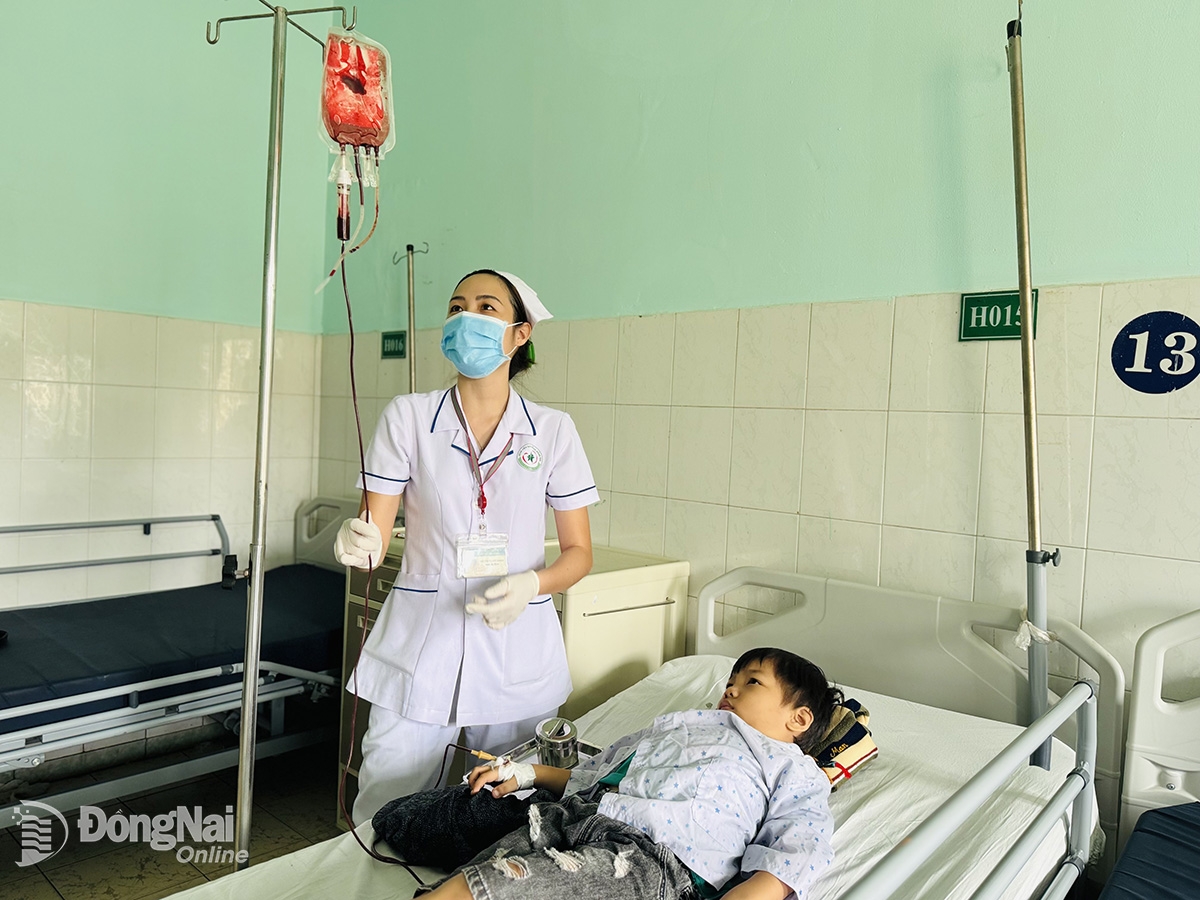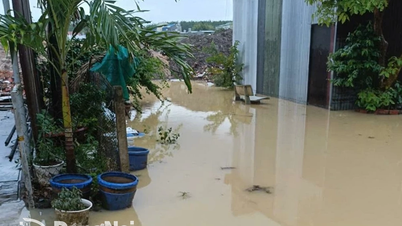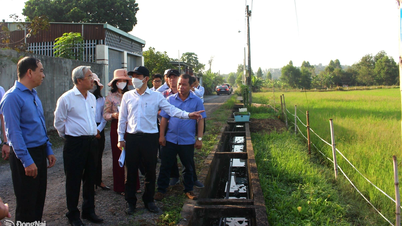 |
| Nurses of the Hematology - Neurology Department, Dong Nai Children's Hospital transfuse blood for patients with congenital hemolytic anemia. Photo: H. Dung |
To prevent children from growing up in hospitals, couples need to do genetic testing before getting married to find out if they carry the disease gene. From there, there will be solutions to give birth to healthy children.
Painful when both children are sick
Sitting by the hospital bed watching her 7-year-old son P. receiving a blood transfusion, Ms. TTL (residing in Tam Phuoc ward, Bien Hoa city) sadly shared that baby P. is the second child of her and her husband, and was diagnosed with TMBS at the age of 1. Her son, who is 11 years old this year, was also diagnosed with the disease 9 years ago.
Ms. L. said that before getting married, she and her husband did not go for a health check-up or genetic testing. When their first child was born, she saw that he was pale and yellow, and often had illnesses such as pneumonia and bronchitis. Ms. L. took him to the doctor and did a blood test to find out that he had TMBS.
According to statistics from the Ministry of Health , the average cost of treatment for a severe TMBS patient from birth to age 30 is about 3 billion VND. A severe patient from birth to age 21 needs about 470 units of blood to sustain life.
“The doctor advised my husband and I to get tested if we wanted to have another child to avoid a similar situation. But when I was pregnant with my second child, I didn’t have the courage to have an amniocentesis. Therefore, baby P. was born with the same disease as his brother. Only after getting tested did I find out that I was the one carrying the disease gene,” Ms. L. confided.
Due to ignorance, for the past 9 years, Ms. L. and her husband have had to take their children to the hospital for treatment. The children's health is not good, so each child is a year late for school, and the eldest son also has congenital heart disease and needs surgery. Ms. L.'s family has spent all their money on treating their children. From 2022 until now, Ms. L. had to quit her job to stay home to take care of her children and take them to the hospital. Her husband has to do all kinds of work to take care of the family's living expenses.
Not only Ms. L's family, but hundreds of other families in the province are also in the same situation because their children and relatives have TMBS.
Specialist Doctor I Tran Xuan Lam, Head of the Department of Hematology - Neurology, Dong Nai Children's Hospital, said that the department is managing and treating 200 patients with TMBS. Of these, about 100 patients require regular blood transfusions and iron excretion. Due to the disease, the children's facial structures have similar features such as: protruding forehead, protruding cheekbones, flat nose, and buck teeth.
Disease prevention is not difficult
According to Dr. Tran Xuan Lam, TMBS is a group of hemoglobinopathies that cause anemia and hereditary hemolysis. Each type of disease is caused by an abnormal synthesis of a type of globin chain. There are two main types of disease: alpha thalassemia and beta thalassemia. In addition, there are other combined types such as thalassemia and hemoglobinopathies.
TMBS is the most common disease among monogenic genetic diseases on autosomal chromosomes; at the same time, it is the genetic disease with the highest rate in the world (about 7% of the world's population carries the hemoglobin and TMBS genes).
The theme of World Thalassemia Day 2025 is Joining hands to prevent Thalassemia for public health and the future of the country.
According to the World Health Organization, about 7% of pregnant women carry the hemoglobin gene and about 1.1% of couples are at risk of having a child with the disease gene. Every year, about 60-70 thousand children are born with severe TMBS worldwide. The disease is concentrated in the Mediterranean, Middle East, Asia - Pacific, including Vietnam.
In Vietnam, according to statistics from the Ministry of Health, there are about 12 million people carrying the TMBS gene and more than 20 thousand people with severe disease who need lifelong treatment. Every year, about 8 thousand children are born with TMBS; of which about 2 thousand children have severe disease and about 800 children cannot be born due to hydrops fetalis. All provinces and cities in the country have people with the disease and carrying the gene that causes TMBS.
Dr. Lam emphasized that TMBS requires lifelong treatment and is expensive. To prevent TMBS, couples before marriage and those of childbearing age should proactively test and screen for the disease gene as soon as possible. Carriers of the disease gene need to be counseled and have their gene resources managed to avoid giving birth to children with severe disease.
Married couples who carry the same gene should be counseled before pregnancy and undergo appropriate prenatal diagnostic measures. If the wife is pregnant, prenatal screening should be performed in the first months to detect possible disease genes in the fetus and counseling and termination of pregnancy should the fetus be found to have severe TMBS.
Hanh Dung
Source: https://baodongnai.com.vn/xa-hoi/202505/ngay-thalassemia-the-gioi-8-5-noi-dau-dai-dang-mang-ten-tan-mau-bam-sinh-a1d174a/


![[Photo] Top players gather at the 2025 Nhan Dan Newspaper National Table Tennis Championship](https://vphoto.vietnam.vn/thumb/1200x675/vietnam/resource/IMAGE/2025/5/23/9ad5f6f4faf146b08335e5c446edb107)


![[Photo] Anh Hoang - Dinh Duc successfully defended the men's doubles championship of the National Table Tennis Championship of Nhan Dan Newspaper](https://vphoto.vietnam.vn/thumb/1200x675/vietnam/resource/IMAGE/2025/5/23/d6ab3bcac02c49928b38c729d795cac6)





















































































Comment (0)